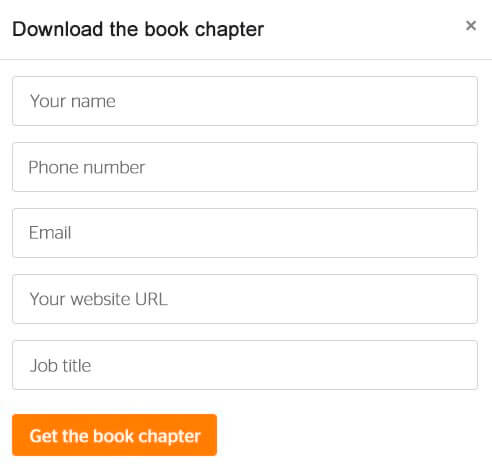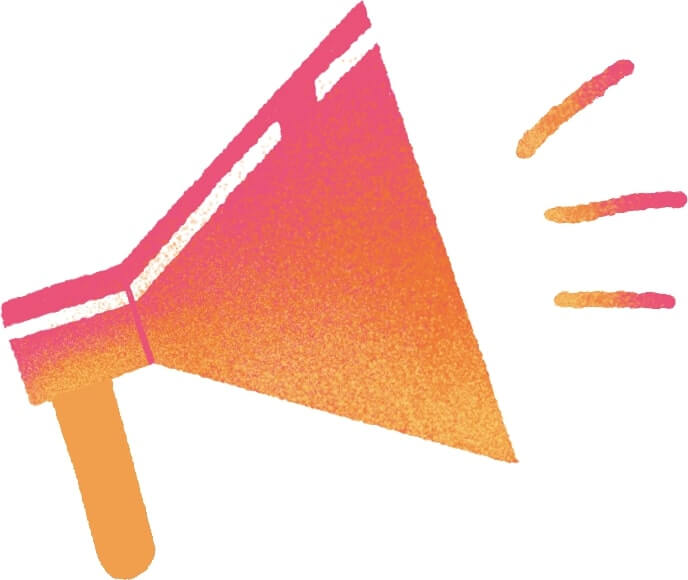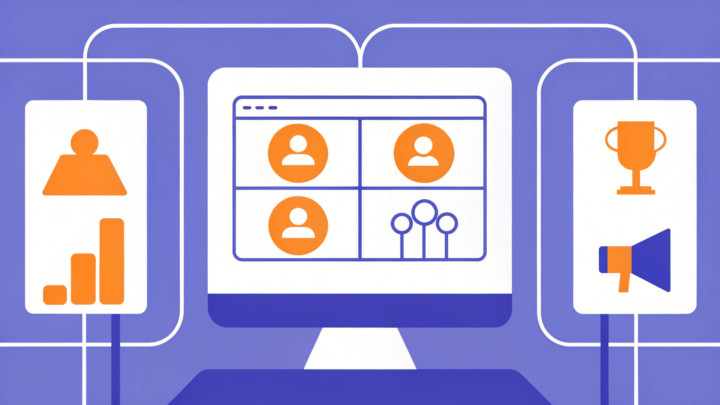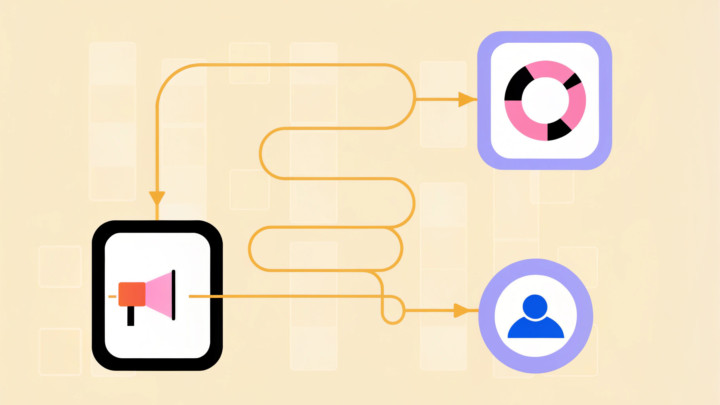How You Can Boost B2B Sales: Tricks You May Not Know

Selling products to B2B customers is tough. You need to encourage a customer to pay you a lot of money. We’ve talked to our sales guru Roman who’s been practicing sales-boosting techniques for eight years now. His experience helped us highlight cognitive tricks that assist us in closing complex deals.
How to prepare for a conversation?
You can’t do without decent preparation if you want to increase sales. Read on to see what info you need and how you should interact before a conversation on the phone.
Collect as much information about your interlocutor
The more you know, the more circles of influence you’ll have and the easier it’ll be to close a deal. You may begin with lead generation: ask for a company name and the person’s position beside their name and contact info.

You can use the chatbot to boost sales by talking to your target users:
Get to know more about the company if you know the name: look for articles about it, see where it’s mentioned and in what context, and what users say about it. This will make it easier for you to arrange the sales process, define potential objectives of your leads and questions which may arise.
Turn to your lead’s personality and their company when you have all the general information. This is highly relevant if your field is enterprise sales. Find out if hobbies may help you connect with them. What if your lead follows a community about traveling? A small talk about your last trip may help you break the ice for an easier start.
I’ve heard many theories on what you should know about a person. Some people say you don’t have to spend much time on it. Others claim the opposite: you should know everything from the company name to your interlocutor’s grandma and grandad. It all depends on the scale of your customer. If you’re about to close a million-worth deal, do your best to find as many touch points as possible
Know who you’ll be talking to
The deal depends on the person’s role in decision making.
The role matters as each employee have their objectives and needs:
- Developers need to be familiar with the tech side of your product.
- Marketers are interested in the tools they can use to boost the conversion rate and sales through various channels.
- CEOs are mostly return-conscious. Keep this in mind to increase the number of successful deals.
Your interlocutors can be divided into decision-makers and decision influencers. If you’re going to talk to the latter one, don’t talk about numbers with them: they are most interested in how your product works as they are highly likely to use it.
Decision-makers, by contract, mostly care about money: how much they will get and what the timelines are.

Make a list of potential discussion topics
This is highly relevant if you’re a beginner. Add 3-5 things to your agenda that you want to discuss. Send the list to your future vis-a-vis so that they can prepare for a conversation, too. A clear agenda also helps control the conversation and cover all topics.
Your agenda may look like this:
1. Customer pain
Why did it occur and what are the roots?
How did the customer approach this issue and why? What do they consider a perfect solution?
2. Customer objectives
What tools can solve customer issues? What are the timelines and success criteria?
3. Customer budget
Where is the customer within the decision-making process? Do they have the budget, or is the discussion still underway?
4. Decision makers
How many employees make a buying decision? Who else is this issue relevant for?
Even if you’re an experienced sales rep, these questions will help you boost sales: adjust them to your product and employ them when dealing with new leads.
How to hold a conversation?
Once you have all the information on your hands and clarify the structure of a conversation, you need to arrange it so you master to close the deal.

Get along with your interlocutor
Intrigue your lead to get them set up for a conversation. Users only pay attention to what’s important as they value their time. When you’re 100% sure of what your users want, you’re starting your conversations properly, and that’s an important part of your phone deal success.
Our sales reps use our platform to collect user data and find a solution to their needs. Dashly collects information on every website visitor:
Sales reps see what a user’s interested in and make an appropriate offer. This approach is relevant for any type of communication: phone calls, live chat messages, and emails.
Listen to your customer
Don’t just persuade them to buy at the very beginning. This won’t help you sell. First of all, discuss topics from your agenda. You’ll get insights from user answers into how your product can solve their issues. Then, you’ll be able to turn to your offer.
If you’re not sure whether your vis-a-vis is a decision maker or a decision influencer, find it out tactfully.
You can do it using these questions:
- How is decision-making arranged in your company?
- Who are you going to discuss the final decision with?
- Who are you going to align this project with?
You can’t tell “You’re a small fry” directly, but this will help you see who you’re talking to. You’ll be able to filter out the information that you don’t need. With the information you need, you won’t challenge the authority of your interlocutor and you’ll see if they can decide on buying a solution or they’re simply in charge of finding one
Inspire a customer with your energy
Show your passion for the product and your inspiring energy. Highlight the benefits of your product that drive you crazy in a good way. Demonstrate them when appropriate, get inspired, and inspire others.
Making a vivid impression is essential at the beginning of a sales process because your customer is going to sell your solution within their company.
Keep this rule in mind to increase sales: the better you get along with someone, the more information you’ll get from them
“Hey there” or “Good afternoon, Mr. John Smith”?
Asking this directly is embarrassing. Frankly, it depends on a person. You’ll get it during the very first call. If you feel you’re talking to an open person, you can use more informal language. Or you can wait until they offer you to use one.
You can only lean on your experience to understand how your vis-a-vis is feeling. However, their mood may change during a conversation. I had conversations that started in a very formal way but then became informal. It all depends on a person, and you should learn to feel them
How you can tell if a person is open:
- Learn about the company and find out the person’s position. If you’re talking to a CEO of a large company, a formal voice is more appropriate.
- Watch your tone of voice. You may hear something like that: “Good afternoon, my name is Mr. John Smith, I’m the CMO of this company”. If that’s the case, you’ll barely switch to an informal voice.
Closing the deal is not solely defined by whether you talk formally or informally, but if you’re friendly, the odds of closing the deal are higher.
Read also:
👉 Live Chat Best Practices: 20 Hacks to Make Customer Service Better
👉7 Best Live Chat for eCommerce: Boost Conversion on your Website
👉 Top 5 live chat mobile app: find the best fit for your business
👉 Live Chat: How Online Chat Tool Can Help Your Business
👉 20 Best Live Chat Software for your website chat service
👉 Acquisition funnel marketing: Grow customer conversions at each step of user journey
👉 The top 15 inbound marketing tools: harness digital power and elevate your business
👉 10 best website personalization tools to deliver top-notch visitors experience
👉 7 best email capture tools: features and pricing compared for 2024
Use humor
Laughter is a good key to a successful conversation. It also helps increase sales. If you know the person’s interests, you may joke about relevant things.
Don’t get confused if they don’t react to your jokes. Keep your temper and switch to another point on your agenda. Don’t know how to evade this? Find out if your interlocutor is interested and open to humor. They may experience personal issues while they can’t put off their work. Grasp their mood and adjust your tone of voice accordingly.
If you manage to speak informally to a person, this may help you sell. When laughing, a person feels more relaxed and open, and they trust you. I had a very long conversation with one customer because we joked a lot, laughed and chatted on unrelated things. It just felt amazing!
Note positive things
When you call someone smart, a person subconsciously tends to match this characteristic. According to donation research by Science of People, there’s an interesting effect. In an experiment, a group of people was told their donations were highest among all other donors, though they made average donations. After a while, they increased the amounts of donations.
Show your customers that you value them. When people feel valued, they get along easier with an open heart. Say things like “It’s nice talking to you”, “I’ll be happy to work with you”, or “I feel happy about customers like your company”.

Never criticize your competitors
Criticizing competitors in an attempt to increase sales is a major mistake. If you say your competitor’s product is bad and unreliable, your potential customer may think you came with a bad product yourselves.
When you see your solution can’t fully meet customer objectives, it’s sometimes even better to suggest a competitor solution to increase sales in the future. If you aggressively “push” a product that can’t solve an issue, you’re highly likely to get negative feedback that will influence your company reputation.
In Dashly, sales reps sometimes decided not to close the deals. Customers bought competitor solutions like CRM systems or end-to-end analytics software, met their objectives, and then thanked us and addressed other objectives. That’s how the law “There’s time for everything” works.
Evaluate your opportunities properly and proceed from objectives and pains that you can cover to ensure a boost in sales. Some leads told us our competitors suggested us to them. Don’t rush to sell right then and there because one unhappy customer may take 10 happy ones away
Stick to your agenda and give a person the sense of control
Remind of your agenda on a call or in a live chat and find out how your customer feels about it. With a sense of control, they will feel more comfortable. You may say “I’m glad that you have the time today. I suggest we discuss the barriers that are on your way. Shall we?”
In this case, you’ll need to keep the conversation history in one place (email, call minutes, live chat, etc). In Dashly, we merged all major communication tools. All conversation history is located in the lead card. Managers can see the journey your lead had already made.

Highlight the most important things with a voice
Use this trick to increase sales over the phone. When you’re selling a product, you’re passionate about it, and your interlocutor may miss important things. We suggest highlighting the most important details with a voice so that it’s truly remembered.
Rehearse your voice at the beginning of your professional path. Repeat the same phrase using different intonations.
Your speech pace and volume also influence perception. Slow down a little when uttering the key points, pause, and adjust your tone accordingly (up or down).

How to bring a conversation to a close?
Making a successful phone call does not mean anything. Use these tricks to eliminate doubts and guide the interlocutor to purchase.
Make them say “Yes” three times
There’s an old theory saying that a person agreeing three times will convert with a probability of 60%. Use these suggestive questions to hear the person say “Yes” to each of them:
- Does our product meet your objectives?
- Does it fit you?
- Are you going to stop looking for other solutions?
When a person says “Yes”, they record it to their mind, and it’s easier for them to decide in favor of your product.

Highlight the significance of a person
Aligning on your next steps, it’s important to draw your conversation to a conclusion. Calling the person by their name is a great psychological trick.
When you call the customer by name, they feel important and valued, so the likelihood of a successful deal goes up.
Wrapping up, we listed some extraordinary tricks for your potential customer that may help you increase sales. Find the ones that fit you the most, employ them in your nearest conversation, and close more deals!
FAQ
How to prepare for a conversation?
Learn about the company: don’t limit yourself to just a company website and look for other content about a company. The more you know about a company and people working in it, the more circles of influence you will have to increase sales.
Collect as much information about your interlocutor:
- what company they work in;
- what their position is;
- what their age is;
- what their hobbies are.
You can get this information using the lead form where a person puts their name, surname, and company. The Internet and social media will help you do the rest.
How to make a list of potential conversation topics?
It all depends on the information you found on your potential customer. Find issues that you will cover with your product. Use these questions for guidance:
Customer pain
Why did it occur and what are the roots?
How did the customer approach this issue and why? What do they consider a perfect solution?
Customer objectives
What tools can solve customer issues? What are the timelines and success criteria?
Customer budget
Where is the customer within the decision-making process? Do they have the budget or is the discussion still under way?
Decision makers
How many employees make a buying decision? Who else is this issue relevant for?
How to hold a conversation?
Get along with your interlocutor. Greet them kindly, introduce yourself, ask how the person is doing.
Listen to them carefully. If they are here, it means something is hurting. After an introduction, give the word to your interlocutor, find out about their issues, and then tell about your product.
Use humor. You may think “How can jokes increase sales?” But they can! When joking, you break the ice, get on better with a person and make them trust you. This is the best way to close the deal.
Don’t criticize your competitors. Sometimes, it’s even better to suggest a competitor solution when your product can’t meet customer objectives. If you push a product that can’t meet customer needs, you’re likely to get negative feedback that will affect your company reputation. Keep in mind that one unhappy customer takes away 10 happy ones from you.
Stick to your agenda. Remind of your agenda on a call or in a live chat and find out how your customer feels about it. With a sense of control, they will feel more comfortable. You may say “I’m glad that you have the time today. I suggest we discuss the barriers that are on your way. Shall we?”
Highlight important things with a voice. We suggest highlighting the most important details with a voice so that it’s truly remembered. This will help increase sales. Your speech pace and volume also influence perception. Slow down a little when uttering the key points, pause, and adjust your tone accordingly (up or down).
How to tell if a customer is ready to buy?
Help a person on their way to a clear answer about their purchase intentions if they can’t give an answer themselves. There’s the “Three ‘Yeses’ technique meaning if a person answers with ‘Yes’ to your three questions, the probability of a successful deal is already 60%. Use these questions for guidance:
Does our product meet your objectives?
Does it fit you?
Are you going to stop looking for other solutions?
Test these questions during a conversation to see how they work. And then, you can adjust them to different customers.
This article was written using content from the Science of People and HubSpot blogs.
Read also:
- 20 AI sales tools: Boost your sales strategy with revolutionary technologies
- Guide to sales funnel optimization: best tips, tools, and common pitfalls
- 10 inspiring sales funnel examples to boost your business growth
- Mastering sales funnel analysis: step-by-step guide, tools, and examples









